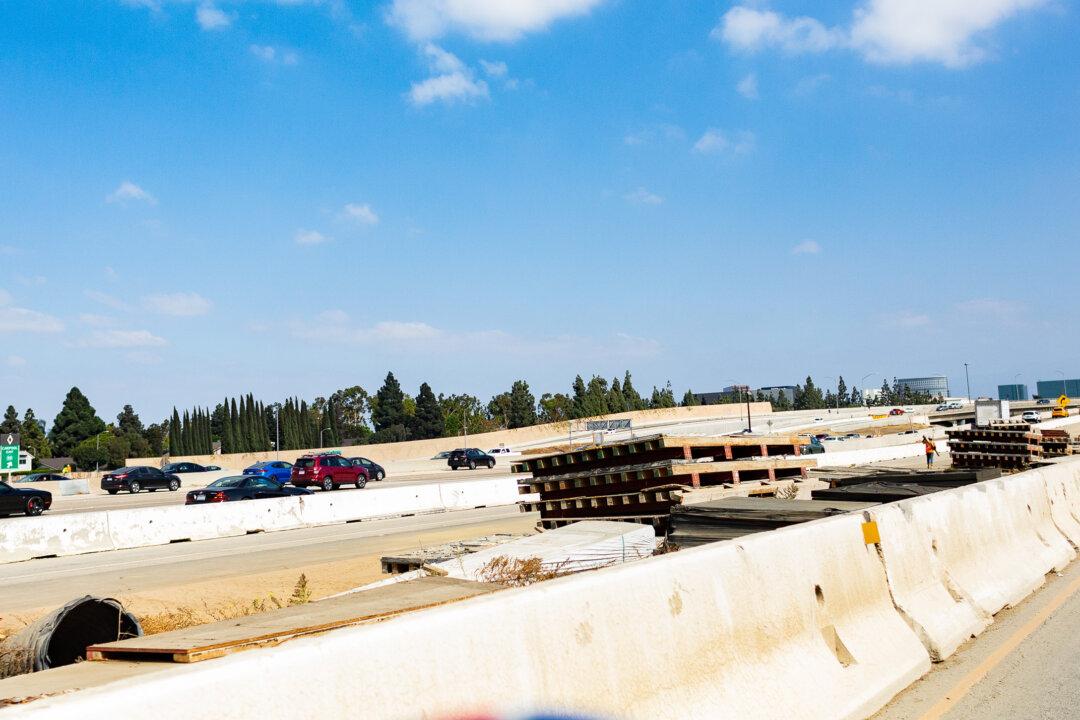The Orange County Transportation Authority (OCTA) announced on Feb. 13 that it has saved taxpayers $509 million on financing a construction project on what officials say is the nation’s busiest stretch of highway.
Through a series of strategies during the COVID-19 pandemic, the agency saved on borrowed money for the $2.1 billion I-405 Improvement Project. The project aims to alleviate traffic congestion on 16 miles of highway between SR 73 in Costa Mesa and I-605 in Seal Beach by adding one extra lane in each direction and transforming the carpool lane and a regular lane into dual express lanes by spring.
“I’m pleased to see OCTA continuing to take an innovative financing approach to maximize available funding for the I-405 Improvement Project,” OCTA Chairman Gene Hernandez, also the mayor of Yorba Linda, California, said in a statement. “Thank you to our partners at the U.S. Department of Transportation for working with us throughout this process and to everyone involved in helping us achieve these immense savings.”
OCTA Chief Financial Officer Andrew Oftelie outlined the methods of savings during a Feb. 13 board meeting.
The largest was on what’s called a Transportation Infrastructure Finance and Innovation Act (TIFIA) loan, a federal loan on transportation projects.
The agency borrowed about $629 million with a 2.9 percent interest rate in 2017, which is uncommon, according to Oftelie, as transportation agencies normally borrow through what are called toll revenue bonds, which are repaid using toll revenues.
By issuing that, the OCTA saved an estimated $300 million, according to Oftelie.





